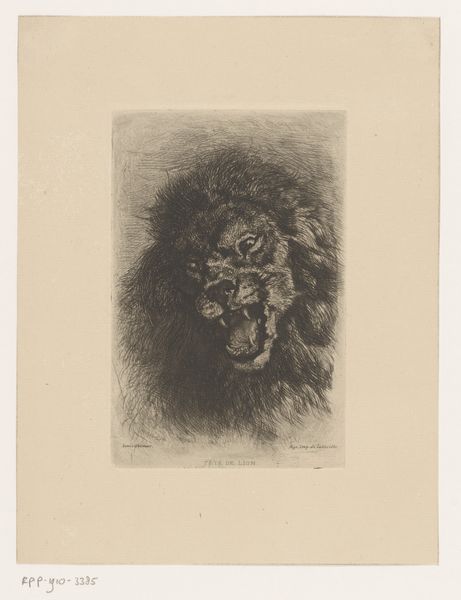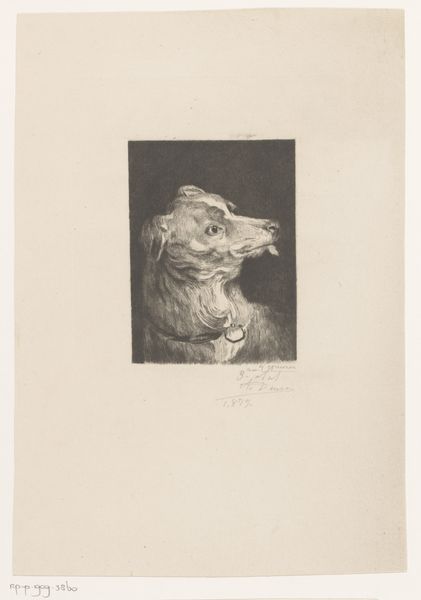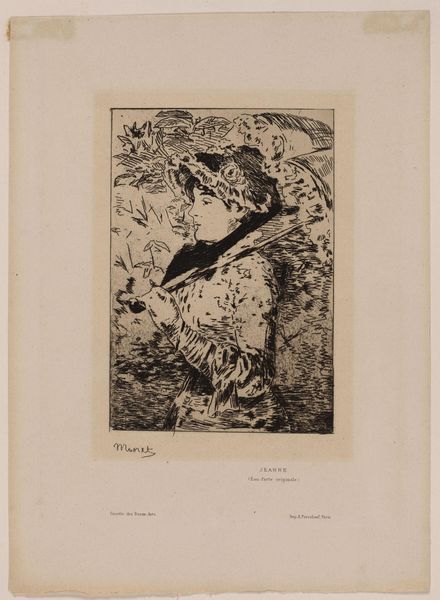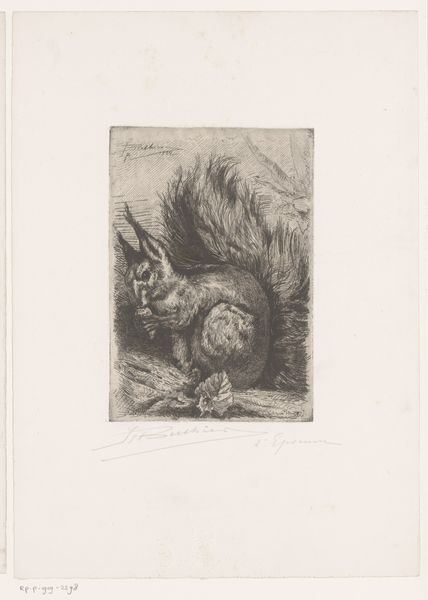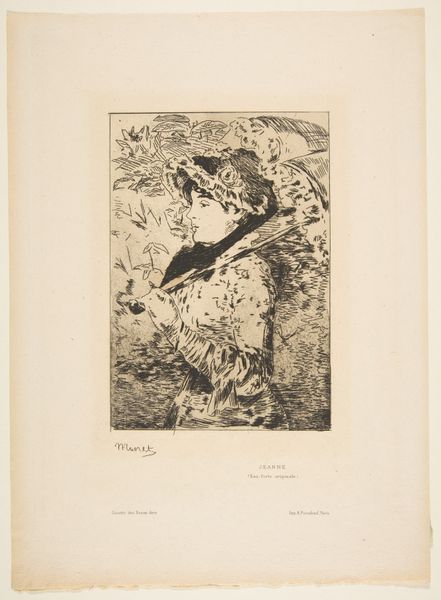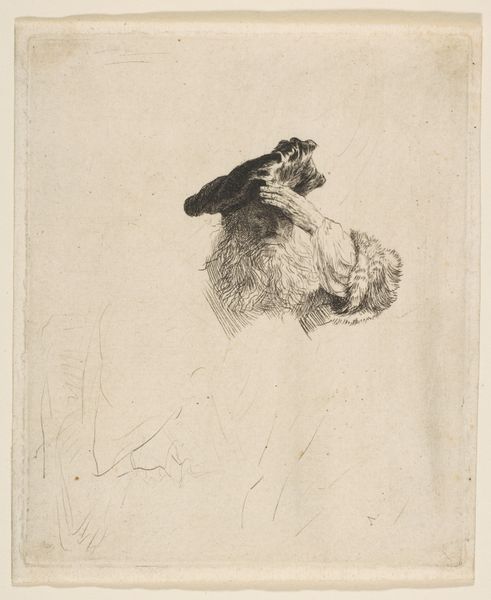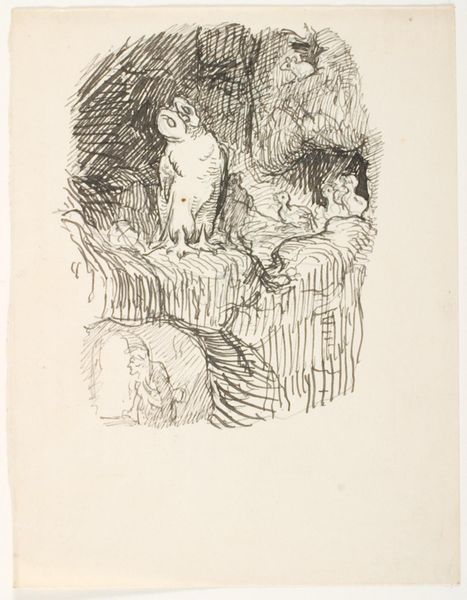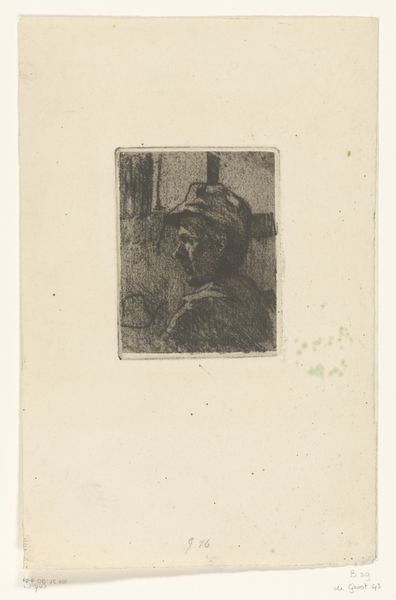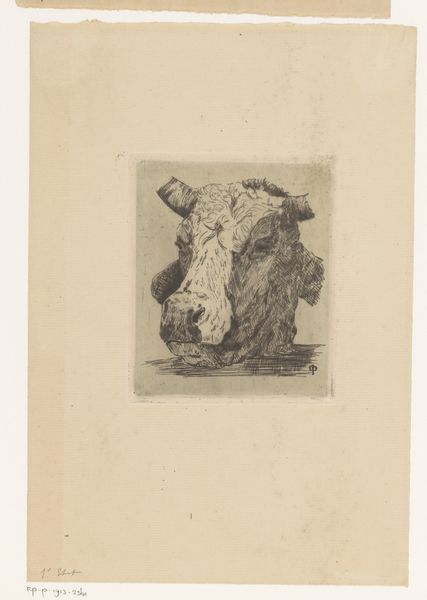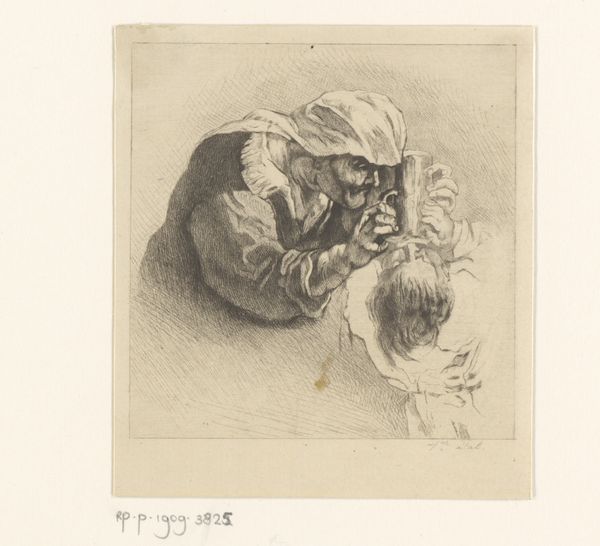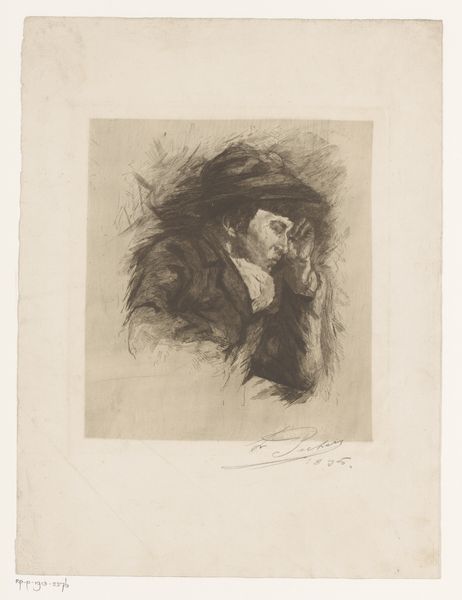
Man Wearing a Plumed Fur Cap amd Scarf c. 17th century
0:00
0:00
print, etching
#
portrait
# print
#
etching
#
etching
#
italian-renaissance
#
italy
Dimensions: 7 1/8 x 5 13/16 in. (18.1 x 14.76 cm) (sheet)11 13/16 x 9 1/8 in. (30 x 23.18 cm) (mount)18 1/16 x 14 1/16 in. (45.88 x 35.72 cm) (mat)
Copyright: Public Domain
Curator: Let's delve into this fascinating print, "Man Wearing a Plumed Fur Cap and Scarf," crafted by Giovanni Benedetto Castiglione, also known as Il Grechetto, around the 17th century. It’s an etching, currently residing here at the Minneapolis Institute of Art. Editor: Striking! The density of line immediately captures your eye. There's a real play with texture—the fur seems almost tangible, while the face has an ethereal quality to it. A nice use of contrast and tonal gradations. Curator: Absolutely, Castiglione was incredibly skilled in capturing varied textures and using chiaroscuro. Prints during this period had significance in making art accessible to a wider audience. Editor: Notice how the hat dominates, obscuring half the face? It creates an air of mystery, doesn’t it? The composition emphasizes the elaborate clothing over distinct, individual features. It draws attention to details rather than the portrait as a whole. Curator: These prints helped disseminate fashion trends and served as visual records. This man is presented almost as a character study. The plumed cap suggests a particular social status. Prints like this reflect patronage structures, art academies and the rise of artistic celebrity. Editor: Yes, it makes me think about theatrical costume design and stage plays. The plume of the cap itself seems to be escaping the subject, drawing upwards. The eye leads through tonal graduations towards a space behind and above the portrait. Curator: Prints indeed frequently had associations with theater and spectacle. It would have been viewed, disseminated, and perceived in a world quite different from how we consume images today. The choice of the Italian Renaissance, when art began celebrating the "everyman," allowed new art demographics to experience art outside of religious spheres. Editor: Reflecting on its formalism, it really boils down to how lines and form coalesce to express both presence and obfuscation simultaneously. The portrait sits within its texture like a ghost within fog. Curator: Precisely. Thinking about its socio-historical value—how such portraits bolstered specific status groups during that era, gives a fresh angle. Editor: Yes. An etching with so much personality. The technical artistry paired with the cultural undertones allows us to reconsider a common format of the time.
Comments
No comments
Be the first to comment and join the conversation on the ultimate creative platform.
